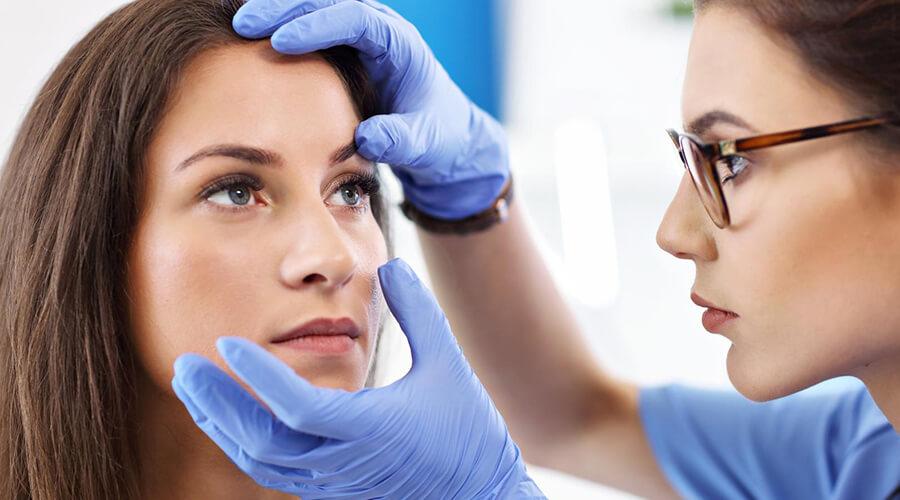
Symptoms and natural treatment of high eye pressure will be the topic of this article.
Unfortunately, persistently high eye pressure can cause irreversible damage to the eye, leading to visual field loss, visual field narrowing and, in the worst case, blindness.
What are the causes of high intraocular pressure?
Eye fluid production and drainage imbalance: fluid is produced and leaks from the inside of the eye. When production exceeds drainage, intraocular pressure can rise.
Hereditary factors: a family history of glaucoma increases the risk. There are genes that can predispose you to this disease.
Age: The risk of glaucoma increases with age. It is more common in older people.
High eye pressure: High eye pressure itself can be a risk factor, although not all people with high eye pressure develop glaucoma.
Other health problems: Certain medical conditions, such as diabetes or high blood pressure, can also increase the risk of glaucoma.
Eye sensitivity: Injuries, inflammation or eye abscesses can also cause high eye pressure.
How can high eye pressure be treated at home?
In the case of high eye pressure, it is important to follow medical supervision and treatment prescribed by your doctor, but some home exercises can also help manage the condition:
Healthy lifestyle: Avoid smoking and reduce alcohol consumption. Eat a healthy diet with plenty of fruit, vegetables and whole grains. Get regular exercise as this can help lower blood pressure.
Eye exercises: To strengthen the eye muscles and increase blood circulation around the eyes, do eye exercises such as massaging the eye area or looking at distant objects for short periods of time.
Eyesaving lifestyle: Avoid prolonged computer or reading activities, as this can increase eye strain and eye pressure.
Adequate rest and sleep: getting enough sleep every night is crucial.
Drinking water: make sure you drink enough water every day, as adequate hydration is important for maintaining eye health.
What is high intraocular pressure?
It’s quite difficult to define exactly what you can call high intraocular pressure. The value of normal intraocular pressure is also not clear. Statistically, the normal value is between 10 and 22 mm Hg (millimetres of mercury). However, some people have an eye pressure as high as 25, while others have an eye pressure as low as 18.
What is the optimal eye pressure?
Generally speaking, the normal value of intraocular pressure is between 12 and 22 mm Hg (mercury). However, in individual cases, the doctor may take other values into account and determine the appropriate level of intraocular pressure depending on the specific circumstances of the individual.
High eye pressure can be measured in several cases.
One may be ocular hypertension, where there is an inherently higher intraocular pressure but no other eye damage is visible and the optic nerves are intact. In this case, the eye pressure is about 25 millimetres of mercury, but no treatment is needed yet, only observation. If the higher eye pressure causes damage, it is called a glaucoma. This disease can be divided into two groups, open and closed angle glaucoma.
A green cataract with a closed angle is called a green cataract attack.
In this case, the anterior chamber of the eye is narrower than average, resulting in increased intraocular pressure. Rainbow rings may be seen around light sources, but there may also be a unilateral headache that resolves in the morning. Unfortunately, the causes of open-angle glaucoma are sometimes unknown. Patients are usually completely asymptomatic but the intraocular pressure can be around 40 millimetres of mercury. The elevated intraocular pressure may be caused by pigment deposits, injury, inflammation, bleeding or eye drops containing steroids.
The treatment is based on doctors first finding out what is causing the high eye pressure and adjusting the treatment accordingly. For a cataract attack, the first step is to use eye drops or infusions to reduce the pressure in the eye, and then laser treatment may be needed. For an open-angle cataract, eye drops are usually prescribed.
What are the symptoms of high intraocular pressure?
Vision loss: glaucoma can cause vision loss gradually over a long period of time. It can affect peripheral vision first, and the patient often does not notice the loss of vision because central vision remains sharp. Later, however, central vision may also be affected.
Fog spots: people may sometimes notice fog spots in their field of vision, especially in low light conditions such as darkness or in rainy weather.
Eye pain: If eye pressure is high, you may also develop pain. People with glaucoma may experience eye pain, especially if the eye pressure rises suddenly.
Headache: High eye pressure can sometimes cause headaches, especially in the forehead and eye area.
Red or painful eyes: High eye pressure can damage the blood vessels in the eye, leading to red or irritated eyes.
Vision problems with changes in light conditions: Glaucoma patients often complain that their vision deteriorates when there is a sudden change in light conditions, such as a sudden bright light coming on or a sudden change from a darker to a brighter place.
Risk factors: Certain factors can increase the risk of glaucoma, such as a family history, high eye pressure, natural processes associated with ageing and certain chronic diseases such as diabetes.
High intraocular pressure or glaucoma is an eye condition often characterised by increased pressure in the eye fluid. Glaucoma can seriously compromise vision, so it is important to treat it properly.
How to reduce high eye pressure or the basic steps to treat high eye pressure:
Medical supervision: if you suspect high eye pressure or glaucoma, see an eye doctor immediately. The doctor will be able to diagnose the problem and determine the appropriate treatment plan.
Medication: glaucoma can often be treated with medications that lower eye pressure. These medications are usually in the form of eye drops and regular use will help to maintain adequate eye pressure. It is important that you strictly follow your doctor’s instructions on how to use the medication.
Laser therapy: Laser therapy is sometimes used to treat glaucoma. Laser therapy can help improve eye pressure or prevent further complications.
Surgical intervention: In more severe cases of glaucoma, surgery may be necessary. Surgical procedures can help open the channels that control eye pressure or remove fluid.
Lifestyle changes: Certain lifestyle factors can affect the development of glaucoma and the severity of high eye pressure. Eating a healthy diet, avoiding smoking, exercising and reducing stress can all help to manage eye pressure.
Regular checks: Glaucoma should be checked regularly. The doctor will check your eye pressure and vision from time to time to make sure that the treatment is effective and that there are no new complications.
Considering heredity: If there is a family history of glaucoma, it is important to inform the doctor, as hereditary factors may play a role in the development of the disease.



